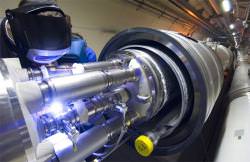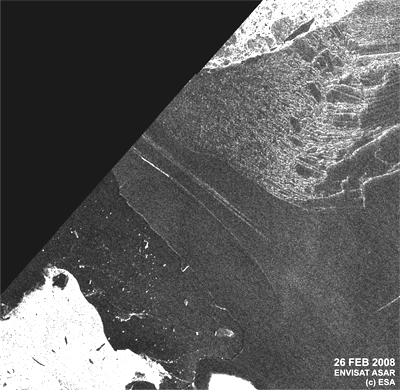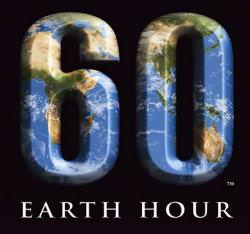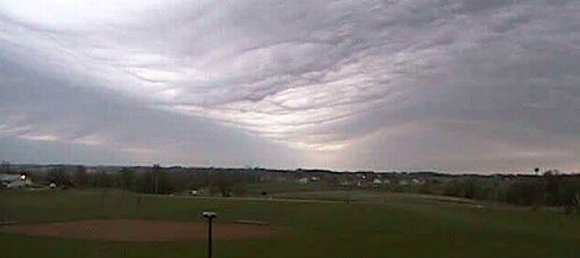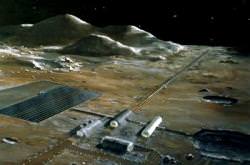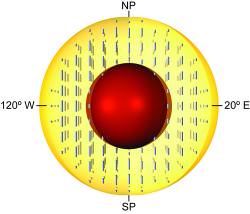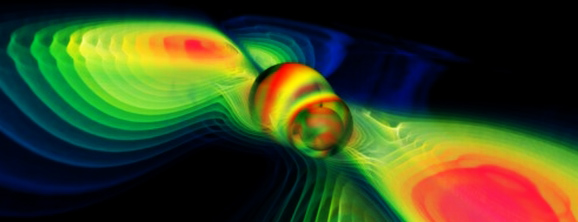NASA’s lead climate scientist says Earth has reached a “tipping point†in the amount of carbon dioxide in the atmosphere at 385 parts per million. But James Hansen, director of NASA’s Goddard Institute for Space Studies believes there are ways to solve the problems of excess greenhouse gases in our atmosphere. Hansen submitted a paper to Science magazine today, which outlines a plan for phasing out all coal-fired plants by 2030 and taxing their emissions, as well as banning the building of any new plants unless they are designed to trap and segregate the carbon dioxide they emit. This plan would need the support of policy makers around the world. But Hansen believes policy makers in the US are ignorant about the significance and gravity of climate change because oil companies influence the executive and legislative branches of the US government. Oil interests are also trying to sway the public’s perception of global warming, Hansen said. “The industry is misleading the public and policy makers about the cause of climate change,†he said in an article published by the AFP news agency. “And that is analogous to what the cigarette manufacturers did. They knew smoking caused cancer, but they hired scientists who said that was not the case.”
Continue reading “Hansen: Earth at Crisis Point”
Hawaiian Man Files Lawsuit Against the Large Hadron Collider (LHC)
The Large Hadron Collider (LHC) is set to go online in May of this year. This magnificent machine will accelerate particles and collide them at such high energies that scientists expect to make some of the biggest discoveries ever about the very small (exotic sub-atomic particles) and the very large (the structure of the Universe itself).
But not everyone is happy. Particle accelerators have always been the source of controversy; at the end of the day, we can only predict the outcome of the LHC experiments. But what if scientists have overlooked something? What if the theories are wrong? A guy living on the other side of the planet to the LHC believes the world may come to an end and he’s begun filing a lawsuit against the completion of the accelerator. The concern? A massive black hole might be created, or vast amounts of antimatter will destroy the Earth. And where’s the scientific basis for all this panic? Hmmm… didn’t think so…
Through fear that the LHC is going to unleash death and destruction on the world, Walter Wagner from Hawaii has filed a lawsuit against an impressive array of defendants. The U.S. Department of Energy, the Fermilab particle-accelerator near Chicago, CERN and the National Science Foundation (NSF) are all named.
Wagner and his associate Luis Sancho have a pretty dubious (and quite frankly, weak) argument against the LHC, as they describe in the lawsuit:
“The compression of the two atoms colliding together at nearly light speed will cause an irreversible implosion, forming a miniature version of a giant black hole. […] Any matter coming into contact with it would fall into it and never be able to escape. Eventually, all of earth would fall into such growing micro-black-hole, converting earth into a medium-sized black hole, around which would continue to orbit the moon, satellites, the ISS, etc.” Walter F. Wagner and Luis Sancho lawsuit, filed in U.S. District Court in Honolulu.
There is no evidence to suggest that colliding particles will create a black hole that will swallow the planet. I do however like their description that the International Space Station will continue to orbit the Earth-mass black hole – at least we’ll have somewhere to hide as the rampaging black hole eats the ground from under us!
The credentials of the plaintiffs are also pretty sketchy. Wagner has worked in nuclear medicine and has a minor degree in physics from Berkley, but he has nothing more advanced than that. His colleague Sancho has an even more sketchy physics background.
Wagner wants the opening of the LHC to be delayed until further safety studies are carried out. Its cases like these that scientists have had to combat for many years. Unfounded predictions of the “end of the world” and fear of the unknown have been published only to be debunked through correct scientific thinking. If the world listened to alarmists such as Wagner and co, we would advance no further.
I for one hope that the LHC does produce micro-black holes. I hope that this time next year we’ll be looking in awe at images of particle tracks from the sensors at the LHC showing the point of creation and the point of evaporation of micro-black holes. Peering very closely we see particle emission as if from nowhere, the evaporating particles from the tiny event horizon. The image will be entitled Hawking Radiation Experiment.
Even if the accelerator energies are not high enough to create mini-black holes, thereby giving Stephen Hawking some experimental evidence for his radiation, we are pretty sure we’ll find some other exotic and exciting particles to help us understand our universe a little bit better. We might gain a better grasp of other dimensions, detect some exotic particles, and lets not forget the possibility of discovering the Higgs Boson.
If we give into the fear of the unknown, scientific advancement will be stopped in its tracks and we may be restricted to scratching at the surface of space-time and string theory, rather than physically proving its existence with tools like the LHC.
Source: FOXnews.com
Break Up of Antarctic Ice Shelf
If anyone is denial about climate change possibly occuring on Earth, please take a look at this. This animation highlights the rapid loss of ice recently on the Wilkins Ice Shelf in Antarctica. Between February 28 and 29, 2008 an area of about 400 sq km disintegrated into large and small icebergs within 24 hours. As a result of the recent collapse, the remaining shelf, which totals about 14 500 sq km, is now only supported by a 6 km strip of ice. This strip is already rifted, and the remaining strip is in danger of breaking up as well.
The Wilkins Ice Shelf is a broad plate of floating ice south of South America on the Antarctic Peninsula. Since the ice shelf is already floating, this event will not cause a rise in sea level. However, ice shelves on the Antarctic Peninsula are sandwiched by extraordinarily raising surface air temperatures and a warming ocean, making them important indicators for on-going climate change.
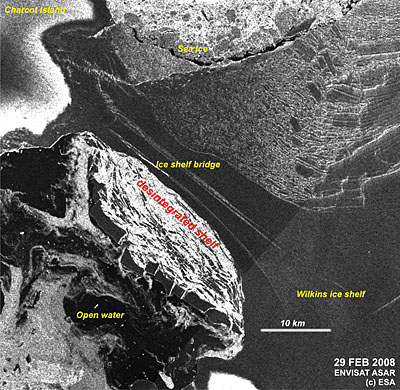
Thousands of years of accumulated and compacted snow on the Antarctic central plateau have formed a mighty ice sheet which flows under gravity towards the coastal plane. Along the coast the ice gradually floats on the sea – to form massive ledges known as ice shelves. But as the temperature has increased, several ice shelves have broken up and disintegrated.
The images used for this annimation were taken by the ESA’s Envisat satellite. Within days of its launch, Envisat captured the disintegration of the Larsen-B ice shelf in Antarctica on 18 March 2002. Scientists estimate Larsen-B had been stable since the last ice age 12,000 years ago.
These images were acquired as part of ESA’s support to the International Polar Year (IPY) 2007-2008, a large worldwide science programme focused on the Arctic and Antarctic.
Original News Source: ESA Press Release
Countdown to Earth Hour 2008…
Do you remember last year when Sydney, Australia made the news by turning their lights out for one hour to show their concern about global warming? Besides being concerned about the effects, especially for my children and grandchildren, as an astronomer I support anything which helps reduce light pollution, even if it’s just for an hour. Beyond extinguishing the lights for 60 minutes at 8pm March 29, 2008, there are lots of things you can do to make Earth Hour 2008 an even greater success. Let’s take a look.
2.2 million people and 2100 Sydney businesses turned off their lights for one hour – Earth Hour – March 29, 2008. According to their information, the greenhouse reduction achieved in the Sydney CBD during Earth Hour was sustained for a year, it would be equivalent to taking 48,616 cars off the road for a year. This year many major global cities are joining Earth Hour in 2008, and they’re are turning a symbolic event into a global movement.
Start showing your support by visiting our own Universe Today Earth Hour page and signing up on the UT page. You’ll see your name appear as an Earth Hour / Universe Today participant! Tell a friend. Better still, tell all your friends, and your family, and your workmates. Just email them with a link to this website. We may or may not make an impact, but it won’t be because we didn’t try. You can also organize your own Earth Hour activities as well and you’ll find packets and information on how to involve your community at the Earth Hour Website.
If you think this is going to be big, then you’re right. Created to take a stand against the greatest threat our planet has ever faced, Earth Hour uses the simple action of turning off the lights for one hour to deliver a powerful message about the need for action on global warming. This simple act has captured the hearts and minds of people all over the world. As a result, at 8pm March 29, 2008 millions of people in the world’s major capitol cities like Aalborg, Aarhus, Adelaide, Atlanta, Bangkok, Brisbane, Canberra, Chicago, Christchurch, Copenhagen, Dublin, Manila, Melbourne, Montreal, Odense, Ottawa, Perth, Phoenix, San Francisco, Suva and Lautoka, Sydney, Tel Aviv, Toronto and Vancouver will be participating as well.
At last count, over 172,000 individuals and nearly 12,000 businesses/organizations have agreed to support Earth Hour. Just who in the astronomy world would do that? In the United States alone you’ll find such great organizations Adler Planetarium, Arizona Science Center, Oceanside Photo and Telescope, StarPals, and The Chicago Astronomer just to name a few. You’d be amazed at the number of schools, universities, restaurants, motels, airlines and others that will be participating.
Sign up now… And let the Universe Today voice be heard!
Gravity Waves in the Atmosphere can Energize Tornados (Video)
Gravity waves are global events. Much like the ripples on a massive pond, these large-scale waves can propagate from an atmospheric disturbance over thousands of miles. These waves are maintained by the gravitational force of Earth pulling down and the buoyancy of the atmosphere pushing up. Until now it has been hard to link atmospheric gravity waves with other atmospheric phenomena, but new research suggests that gravity waves passing over storms can spin up highly dangerous and damaging tornados… Suddenly gravity waves become very important and may help to forecast where and when tornados may strike…
In a nutshell, meteorologist Tim Coleman of the National Space Science and Technology Center in Huntsville (Alabama) sums up what gravity waves are:
“They are similar to waves on the surface of the ocean, but they roll through the air instead of the water. Gravity is what keeps them going. If you push water up and then it plops back down, it creates waves. It’s the same with air.” – Coleman
A large number of things may cause gravity waves (not to be confused with gravitational waves, the ripples in space-time), including intense disturbances caused by storm systems, a sudden change in jet stream location or wind shear. The strong oscillation will then travel for hundreds or even thousands of miles.
See a gravity wave in action over Iowa…
Far from gravity waves being a mild curiosity, it seems that they have a large part to play with other atmospheric dynamics down here on the ground.
Tim Coleman and colleagues have found that the passage of gravity waves over the top of storms could intensify or even create tornados. It is all down to the angular momentum of the spinning storm. When storms are large, they slowly rotate. If for some reason they shrink in scale, the spin will increase (imagine an ice-skater spinning on the ice with her arms outstretched, as she brings her arms in, she spins faster). This is the fundamental rule of angular momentum conservation, as the size of a storm contracts, the faster it spins. Ultimately, if the conditions are right, intense tornados can be generated, a huge amount of angular momentum in a tiny volume.
Now gravity waves are believed to have a part to play. As they pass over a storm, the pressure of the overlying gravity wave propagation will compress the storm. As this occurs, a vast amount of angular momentum is forced into a smaller volume. The seeding of baby tornados is therefore possible. Gravity waves also come in sets; one wave will follow another, each periodically compressing the storm, intensifying tornado generation.
So keep your eyes peeled for incoming gravity waves during a storm… tornados may spin to life…
Source: NASA
Plans for a “Doomsday Ark” on the Moon are in the Works
Let’s say something terrible happens to your computer, like it crashes or you drop it. All of those movies you bought online are toast, as is your address book and most of your work. It’s always a good idea to have a backup somewhere else, right?
Having a backup of your computer is handy, but having a backup of the entire progress of human civilization is even more practical. If a major catastrophic event like nuclear war or an asteroid strike wipes out most of the humans on the planet, it would be helpful for the survivors to have a record of all the accomplishments we’ve made in the past few thousands of years to help rebuild and repopulate the Earth.
The closest off-world place to store such a structure and ensure its safety would be the Moon. The construction of such a “doomsday ark” was presented last month by William Burrough and Jim Burke at a symposium on “Space Solutions to Earth’s Global Challenges” at the International Space University in Strasbourg, France.
There are already gene banks – stores of plant seeds – around the world, one of which is the Svalbard Global Seed Vault, which officially opened last month. But having a backup inside your computer doesn’t help if you drop it in a lake, so taking such an important operation off the Earth would make it that much more likely to survive any major catastrophes.
The ark would contain hard disks that store the genetic information of humans, plants and animals, as well as information on necessary or helpful processes for survival such as smelting metal, planting crops and building houses. Like the seed vaults, the ark could be expanded to include actual seeds, plants and frozen genetic material, which would aid in the re-population of these species given that a spacecraft could be launched to retrieve them.
After being constructed underneath the surface of the Moon to protect it from the radiation from the Sun and the extreme temperatures of the Moon’s surface, the vault could be set to automatically transmit the information to the Earth in case of disaster. Outposts containing a receiver and supplies necessary for survival would be installed across our planet to aid in rebuilding and the reception of information. The databank would transmit in a variety of different languages to ensure that the survivors could actually read the sent instructions.
To start, the ark would be tended by robots, but a future base on the Moon might allow it to be maintained and improved by human beings (an even better safeguard against humanity being wiped out).The scientists think it would be possible to place such an ark on the Moon before 2020. This basic archive would have a 30-year lifespan, and could be followed up with a more complete archive by the year 2035.
Source: Telegraph.co.uk
Discovery of the Earth’s Inner, Inner Core
The traditional view of the Earth’s interior has the crust (where we live), the upper and inner mantle, the outer core, and the inner core; wrapped around each other like layers of an onion. But now textbooks will need to be revised. It turns out there’s an inner, inner core.
The core of Earth is known to have an inner core of solid iron about 2,400 km (1,500 miles). Wrapped around that is a fluid outer core that reaches 7,000 km across (4,300 miles). As the solid core rotates inside the fluid core, it generates the magnetic field that helps us navigate, and protects the planet from harmful radiation and the effects of the solar wind.
Geologists from the University of Illinois at Urbana-Chamaign have been probing the interior of the planet, trying to get a better sense of its structure. And that’s harder than it sounds. You can’t just look down through thousands of km of solid rock.
There were using the natural waves that pass through the Earth after earthquakes shake on the surface. The waves are bent and reflected as they pass through the various layers inside the planet.
The team was specifically studying how the waves were affected as they passed through the solid inner core and were surprised to see that it wasn’t a uniform sphere of iron.
Instead, the seismic waves clearly showed that there’s an additional layer at a diameter of 1,180 km (733 miles), which makes this less than half the diameter of the inner core.
This is the Earth’s inner, inner core.
So what is it? Here’s what the lead scientists, Xiaodong Song had to say:
“Our results suggest the outer inner core is composed of iron crystals of a single phase with different degrees of preferred alignment along Earth’s spin axis,” Sun said. “The inner inner core may be composed of a different phase of crystalline iron or have a different pattern of alignment.”
It’s still iron, just not in the same crystalline structure. Perhaps its time to give the layers new names, inner inner core doesn’t quite work for me.
Original Source: University of Illinois News Release
Earth and Moon, As Seen From Mars
This picture was released a couple of days ago, but since it’s so special, it deserves a post on Universe Today. And besides, everyone secretly likes to look at pictures of themselves. And this is a picture of us: it’s the Earth and the moon, as seen from Mars. From the Mars Reconnaissance Orbiter, to be exact, and it was taken by the HiRISE Instrument on board, the High Resolution Imaging Science Experiment. That’s the same camera that gave us the images of the avalanche on Mars, so the capabilities of this instrument are quite spectacular. This image was snapped back in October 2007, from a distance of 142 million kilometers, and if you look closely, you can make out a few features on Earth.
The west coast outline of South America is at lower right on Earth, although the clouds are the dominant features. In fact, the clouds were so bright, compared with the Moon, that they almost completely saturated the filters on the HiRISE camera. The people working on HiRISE say this image required a fair amount of processing to make a such a nice-looking picture. Yes, I agree, we are looking quite nice.
The phase angle is 98 degrees, which means that less than half of the disks of the Earth and Moon have direct illumination from the sun; that’s the reason we only see about half of each object. The scientists working on HiRISE say they would be able to image the Earth and moon when they are fully illuminated, but only when they are on the opposite side of the sun from Mars. However, then the distance would be much greater and the image would show less detail.
At this distance, this HiRISE image has a scale of 142 km/pixel, giving the Earth diameter about 90 pixels and the Moon diameter 24 pixels.
And now, back to the target that HiRISE was originally designed for: Mars. Here’s a very colorful (and false color) image that highlights the different minerals in Nili Fossae on Mars, one of the potential landing sites for the Mars Science Laboratory rover. From the CRISM instrument, the on-board spectrometer, scientists can discern that this area on Mars contains iron and magnesium, minerals that also contain water.
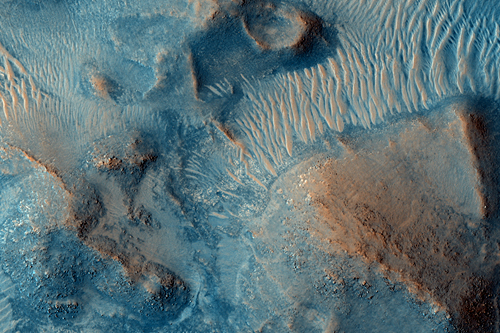
Original News Source: HiRISE Web page
Solar Variability Most Likely Not the Cause of Global Warming
The gradual increase in global temperatures is getting harder and harder to pin on the Sun and its energy output variability. The Sun has a variation in how much energy it outputs but this variability is only about one tenth of one percent. The pattern of atmospheric heating since the 1960s is showing an increase with the increase in human activity (industry, transportation, power generation) and neither are showing signs of slowing down…
At the American Association for the Advancement of Science (AAAS) meeting in Boston, many talks are focusing on climate change and the human impact on the Earth. Experts in solar science, climate modeling, and atmospheric science are exploring the issues surrounding what the main culprit behind the rapid rate of change in global temperatures could be. The sole energy input into the Earths atmosphere comes from the Sun; so many scientists have looked toward our star for the answers. The Sun does vary its output of energy (historically, this is obvious during long periods of solar inactivity, such as the Maunder Minimum in the 1600’s where hardly any sunspots were observed on the Sun – this reduction in activity has been linked to the “Little Ice Age” experienced during this time), but generally speaking, the net energy increase or decrease is very small.
The link between solar variability and global warming has taken another blow from analysis of historical samples of sediment containing radioactive carbon-14 and a beryllium isotope. Quantities of carbon-14 and beryllium-10 reflect solar activity as they are greatly affected by solar magnetic field strength. The Sun’s magnetic field is directly related to solar activity (and therefore sunspot population). These radioactive isotopes are created by the impact of cosmic rays in the Earths atmosphere, and should the solar magnetic field be strong (i.e. during periods of high activity), cosmic rays will be blocked, reducing the quantity of isotopes in the sediment.
However, results from this analysis appear inconclusive and no strong link can be found in favour of increased solar activity during periods of atmospheric heating.
Linking any atmospheric phenomenon with solar variability is a difficult task. Attempts to connect monsoons with the 11-year solar cycle for instance have failed in 150 years of trying. It would seem that, for now at least, any connection between increased solar energy output and global warming is tenuous at best.
Casper M. Ammann, climate modeler at the National Center for Atmospheric Research in Boulder, Colorado, points out that global temperatures are rising at a historic rate, and there remains no link between solar variability and global warming. He states that global warming has “nothing to do with changes in solar activity. It’s greenhouse gases. It’s not the sun that is causing this [climate] trend.”
Perhaps the only answer is to drastically cut back our dependence on fossil fuels to slow the rate of carbon dioxide production. Even if the Sun should decide to become inactive, as there appears to be very little relationship between solar output and global warming, we will not be able to escape the greenhouse gases heating up our climate.
Source: Physorg.com
What Would Happen if a Small Black Hole Hit the Earth?
We can all guess what would happen should a massive black hole drift into our solar system… there wouldn’t be much left once the intense gravitational pull consumes the planets and starts sucking away at our Sun. But what if the black hole is small, perhaps a left over remnant from the Big Bang, passing unnoticed through our neighborhood, having no observable impact on local space? What if this small singularity falls in the path of Earths orbit and hits our planet? This strange event has been pondered by theoretical physicists, understanding how a small black hole could be detected as it punches a neat hole though the Earth…
Primordial black holes (PBHs) are a predicted product of the Big Bang. Due to the massive energy generated at the beginning of our Universe, countless black holes are thought to have been created. However, small black holes are not expected to live very long. As black holes are theorized to radiate energy, they will also lose mass (according to Stephen Hawking’s theory, Hawking Radiation), small black holes will therefore fizz out of existence very rapidly. In a well known 1975 publication by Hawking, he estimates the minimum size a black hole must be to survive until present day. The PBH would have to be at least 1012kg (that’s 1,000,000,000,000 kg) in mass when it is created. 1012kg is actually quite small in cosmic standards – Earth has a mass of 6×1024kg – so we are talking about the size of a small mountain.
So, picture the scene. The Earth (any planet for that matter) is happily orbiting the Sun. A small primordial black hole just happens to be passing through our solar system, and across Earths orbit. We are all aware of how a rocky body such as a Near Earth Asteroid would affect the Earth if it hit us, but what would happen if a small Near Earth Black Hole hit us? Theoretical physicists from the Budker Institute of Nuclear Physics in Russia, and the INTEGRAL Science Data Center in Switzerland, have been pondering this same question, and in a new paper they calculate how we might observe the event should it happen (just in case we didn’t know we had hit something!).
PBHs falling into stars or planets have been thought of before. As previously reviewed in the Universe Today, some observations of the planets and stars could be attributed to small black holes getting trapped inside the gravitational well of the body. This might explain the unusual temperatures observed in Saturn and Jupiter, they are hotter than they should be, the extra heat might be produced by interactions with a PBH hiding inside. If trapped within a star, a PBH might take energy from the nuclear reactions in the core, perhaps bringing on a premature supernova. But what if the PBH is travelling very fast and hits the Earth? This is what this research focuses on.
I’d expect some catastrophic, energetic event as a primordial black hole hits the Earth. After all, it’s a black hole! But the results from this paper are a bit of an anti-climax, but cool all the same.
By calculating where the energy from the collision may come from, the researchers can estimate what effect the collision may have. The two main sources of energy will be from the PBH actually hitting Earth material (kinetic) and from black hole radiation. Assuming we have more likelihood of hitting a micro-black hole (i.e. much, much smaller than a black hole from a collapsed star) originating from the beginning of the Universe, it is going to be tiny. Using Hawking’s 1012kg black hole as an example, a black hole of this size will have a radius of 1.5×10-15 meters… that’s approximately the size of a proton!
This may be one tiny black hole, but it packs quite a punch. But is it measurable? PBHs are theorized to zip straight through matter as if it wasn’t there, but it will leave a mark. As the tiny entity flies through the Earth at a supersonic velocity, it will pump out radiation in the form of electrons and positrons. The total energy created by a PBH roughly equals the energy produced by the detonation of one tonne of TNT, but this energy is the total energy it deposits along its path through the Earths diameter, not the energy it produces on impact. So don’t expect a magnificent explosion, we’d be lucky to see a spark as it hits the ground.
Any hopes of detecting such a small black hole impact are slim, as the seismic waves generated would be negligible. In fact, the only evidence of a black hole of this size passing through the planet will be the radiation damage along the microscopic tunnel passing from one side of the Earth to the other. As boldly stated by the Russian/Swiss team:
“It creates a long tube of heavily radiative damaged material, which should stay recognizable for geological time.” – Khriplovich, Pomeransky, Produit and Ruban, from the paper: “Can one detect passage of small black hole through the Earth?“
As this research focuses on a tiny, primordial black hole, it would be interesting to investigate the effects of a larger black hole would have on impact – perhaps one with the mass of the Earth and the radius of a golf ball…?
Source paper: arXiv

